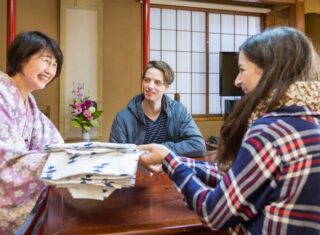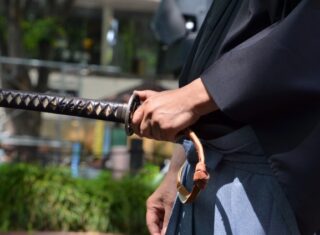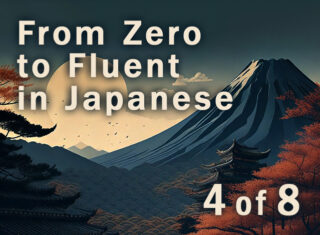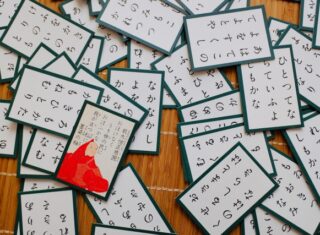- Learning Japanese
- Japanese Culture
What Is Kabuki, Japan’s Traditional Performing Art? | History, Appeal, and Where to Experience It
2025.09.01
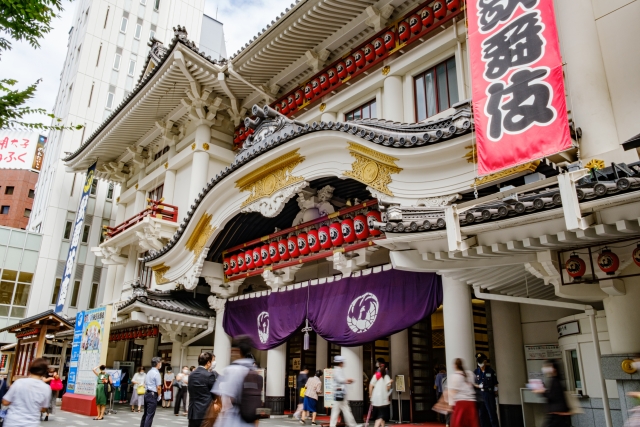
Many people wonder, “What exactly is Japanese kabuki theater?”
When we hear the word kabuki, we often imagine bold makeup, lavish costumes, and dynamic performances. But in reality, few people know in detail what kind of traditional art form kabuki truly is.
In this article, we’ll explain what kabuki is, explore its history and unique appeal, and also introduce the different types of performances and the places in Japan where you can watch kabuki today.
What Is Kabuki?
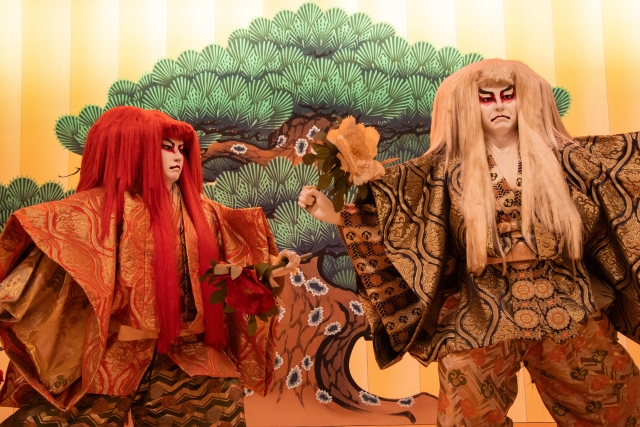
Kabuki is a form of comprehensive performing art that combines music, dance, and drama. It has been performed in Japan for over 400 years and is recognized as one of the nation’s most iconic traditional arts.
The word kabuki comes from kabuku (to behave in an eccentric or unconventional way), and as its name suggests, kabuki is performed in flamboyant costumes, such as elaborately decorated kimono.
Another hallmark is its distinctive stage makeup known as kumadori, where bold red, blue, and other colors are painted over a white base, symbolizing the emotions and qualities of the characters.
Kabuki is also set apart from other theatrical traditions by features such as rotating stages for dramatic effects, and the fact that all roles are performed by men—both male characters (tachiyaku) and female characters (onnagata).
The History of Kabuki
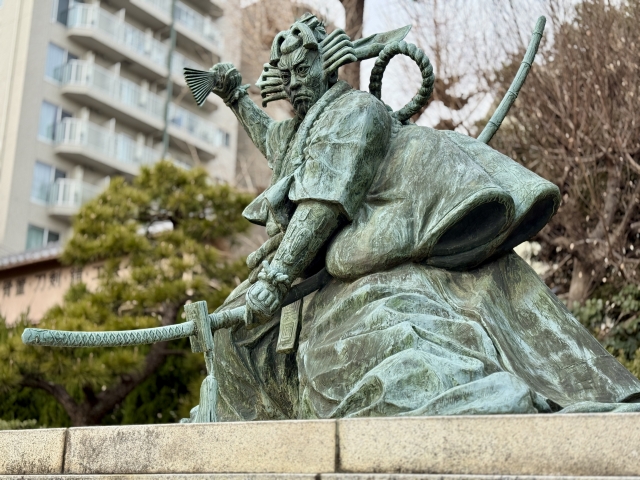
Kabuki traces its origins back to the early 17th century in Kyoto, when a female performer named Izumo no Okuni began presenting what was called kabuki odori (“eccentric dances”).
These performances, which often depicted kabukimono—people known for their flamboyant fashion and outrageous behavior—quickly became popular among both commoners and aristocrats.
Later, a style called onna kabuki (“women’s kabuki”) emerged, featuring women dancing and singing with musical accompaniment. However, the Tokugawa shogunate banned women from the stage, citing that it corrupted public morals.
In their place, wakashū kabuki (“young men’s kabuki”) rose in popularity, performed by adolescent boys. Over time, this led to the tradition we see today, where male actors perform both male and female roles.
Though kabuki’s history spans more than 400 years, it has continually evolved by incorporating the trends and cultural influences of each era. For this reason, kabuki is often described as an “art form that is never complete.”
The Appeal of Kabuki
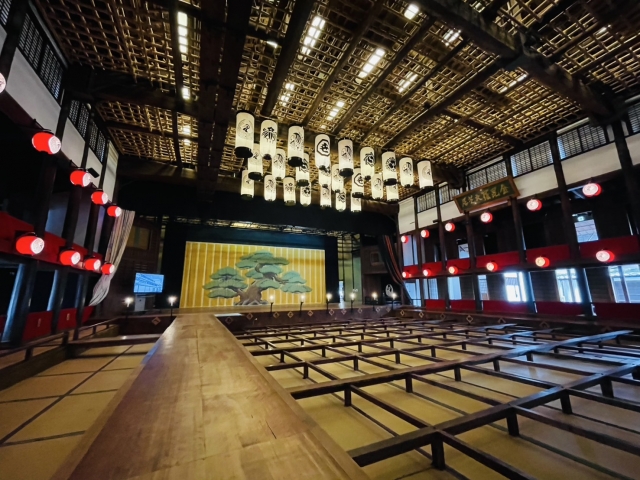
The unique charm of kabuki can be seen in three main aspects:
- The acting of kabuki performers
- The sense of unity between actor and audience
- The music performed with traditional Japanese instruments
Let’s take a closer look at each of these.
The Acting of Kabuki Performers
Kabuki features highly stylized acting techniques, such as the dramatic mie, where an actor freezes in a powerful pose at the peak of emotion, or the piercing nirami, where one eye crosses while the other stares forward to intimidate the audience.
Another unique aspect is that kabuki has no director. The lead actor decides the expression, staging, and even costumes, which means that the same play can differ greatly depending on the actor.
When an actor’s interpretation becomes especially beloved, it may even be named after them and passed down through generations as part of a “family style” (ie no gei). This is one of the reasons kabuki has remained so beloved for centuries.
The Unity Between Actors and Audience
Another unique appeal of kabuki is the sense of connection between performers and the audience.
Kabuki theaters feature a hanamichi, a walkway that extends through the audience seating area, allowing actors to appear right beside spectators and creating an intimate, immersive atmosphere.
In addition to applause, it is also common for audience members to call out phrases such as “◯◯-ya!” or “◯◯daime!” (praising an actor or calling out their stage name).
These shouts of encouragement are known as ōmukō, and they heighten the actors’ spirits, energize the crowd, and fill the entire theater with excitement.
Music with Traditional Japanese Instruments
Another charm of kabuki is its music, which is performed almost entirely with traditional Japanese instruments.
Instruments such as the shamisen, tsuzumi (hand drum), shinobue (bamboo flute), and kane (gong) provide not only musical accompaniment but also express characters’ emotions, create sound effects like falling rain, and intensify the drama of the scene.
Sometimes even animal sounds are imitated through instruments, adding an extra layer of artistry. Listening for these creative touches is one of the delights of watching kabuki live in the theater.
★Also try reading:
Deepen Your Understanding of Japanese Culture and Traditions! A Detailed Guide to 12 Iconic Traditions
The Four Main Types of Kabuki Plays
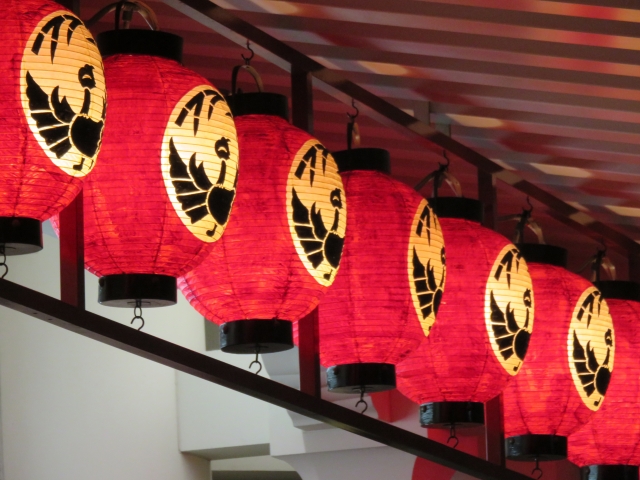
There are more than 300 kabuki plays, but they are generally divided into four main categories:
|
Jidaimono (Period Plays) |
Stories set in the Heian, Kamakura, or Muromachi periods, often with historical or legendary themes. |
|
Sewamono (Domestic Plays) |
Dramas based on incidents from the lives of townspeople during the Edo period, including love affairs and crime stories. |
|
Shosagoto (Dance Plays) |
Performances that showcase dance, often featuring lavish costumes and stylized choreography. |
|
Shin-Kabuki (New Kabuki) |
Plays written from the mid-Meiji period onward, which introduced modern themes and perspectives. |
From tales of everyday romance and murder among townspeople to adaptations of myths and legends, kabuki encompasses a wide variety of stories, each with its own appeal. Audiences are encouraged to explore and find the type of performance that resonates most with them.
Tips for Enjoying Kabuki in Japan
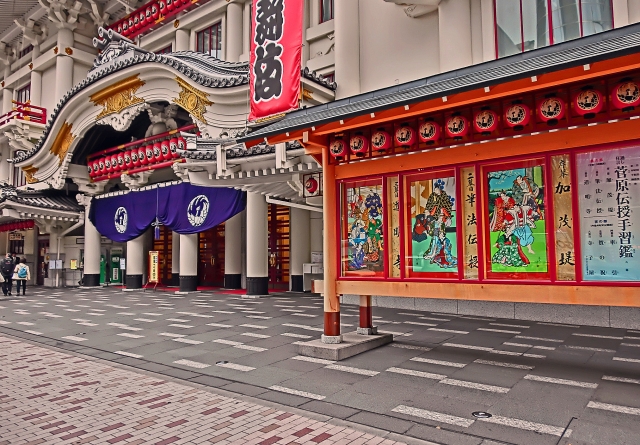
If you plan to watch kabuki in Japan, here are five key points to keep in mind:
- Identify characters by the colors of their makeup
- Pay attention to the mie
- Listen to the earphone guide commentary
- Wear whatever clothing you like
- For first-timers, try the single-act seats (hitomakumise)
Let’s take a closer look at each of these.
Identify Characters by Makeup Colors
When enjoying kabuki, you can often tell what kind of character is being portrayed simply by the base color of the makeup:
|
White |
noble figures or handsome men |
|
Red |
underlings or henchmen of villains |
|
Skin-tone |
townspeople |
In addition to the base color, kabuki makeup also features bold lines known as kuma. The color of these lines further reveals the character’s role:
- Red lines → heroes or allies of justice
- Blue lines → villains
- Brown lines → demons or supernatural beings
Recognizing these cues makes it easier to understand the story and characters, even without deep prior knowledge.
Pay Attention to the Mie
Another tip is to watch for the dramatic mie. This is when an actor suddenly strikes a bold pose and holds it still during a pivotal moment of the story.
The mie is designed to capture the audience’s attention and highlight the emotional climax of a scene. It’s also the perfect time for the audience to applaud.
So, when you see an actor deliver a striking mie and feel the impact of the performance, don’t hesitate to show your appreciation with enthusiastic applause.
Listen to the Earphone Guide Commentary
Many kabuki theaters offer earphone guide services. These provide real-time explanations of the story, characters, and unique stage conventions of kabuki as the performance unfolds.
Even beginners can follow along and enjoy the performance more easily with these guides. Some theaters also offer guides in languages other than Japanese, so be sure to check the theater’s performance information page in advance.
Wear Whatever You Like
Kabuki often has a reputation for being “formal” or “intimidating,” but in reality, there is no dress code. You’re free to watch in whatever attire you feel comfortable.
Some people enjoy coordinating their outfits with colors or accessories inspired by the play, while others choose to wear kimono to enhance the cultural experience. Whether casual or traditional, it’s up to you.
For First-Timers: Try the “Single-Act Seats”
If it’s your first time watching kabuki, we recommend the single-act seats (hitomakumise), which allow you to enjoy just one act instead of sitting through the entire performance.
A full kabuki program typically consists of three to four acts, which can take several hours. With a single-act ticket, however, you can watch just one segment—perfect for those who want a shorter, more accessible experience.
Although these seats are sometimes limited (for example, available only on the fourth floor), they are more affordable and allow travelers to enjoy kabuki without committing too much time.
Where to Watch Kabuki in Japan

Here are three of the most famous theaters where you can experience kabuki:
- Kabukiza (Tokyo)
- Minamiza (Kyoto)
- Osaka Shochikuza (Osaka)
All three are historic theaters, making them ideal for those who want to experience kabuki in a setting rich with tradition.
In Tokyo, kabuki performances are held almost year-round, while in Kyoto and Osaka, performances are scheduled periodically. If you’re visiting Japan, be sure to check the theater schedules in advance to find a show that fits your trip.
★Also try reading:
14 Historic Landmarks to Visit During Your Trip to Japan
Conclusion: What Is Kabuki?

Kabuki is a traditional Japanese performing art with over 400 years of history, enjoyed by many for its unique acting style, the dynamic connection between actors and audience, and the rich sounds of traditional Japanese instruments.
If reading about kabuki—and Japanese culture in general—has inspired you to start learning the language, why not try an online lesson with Oku Sensei’s Japanese?
At Oku Sensei’s Japanese, you’ll gain practical skills in reading, writing, and conversation, all with the warm, personalized support of experienced teachers. Even beginners can feel confident and enjoy the process of learning.
Right now, we’re also offering a free 30-minute consultation, so don’t miss this chance to get started!


